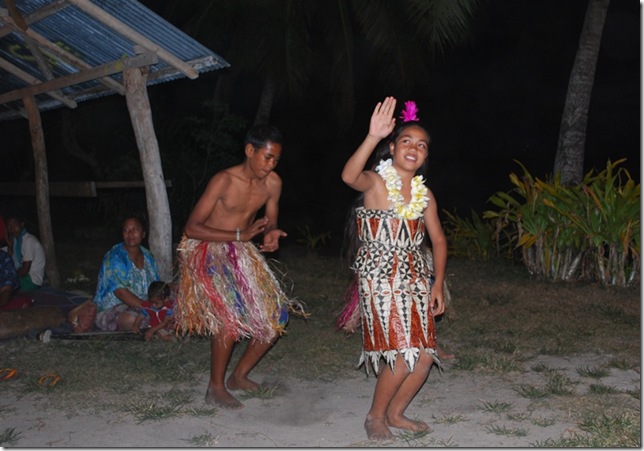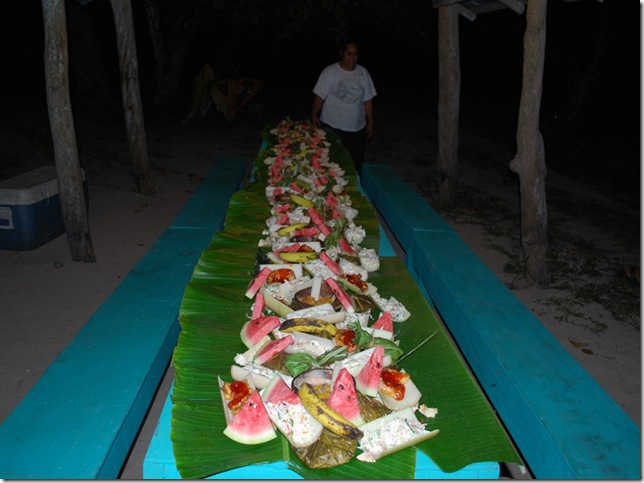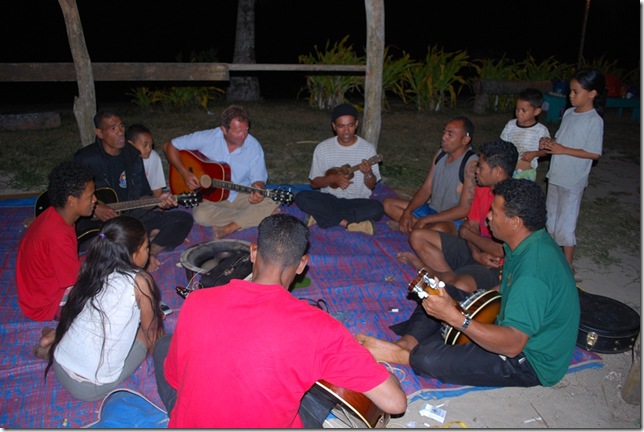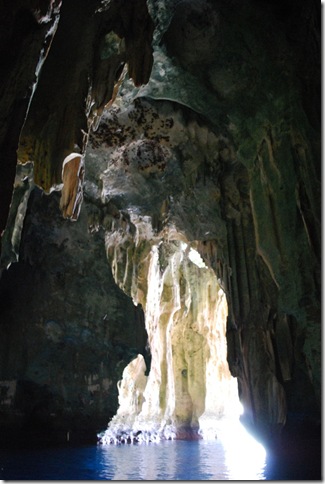After a nice night in the cove by Lisa’s beach, we slowly got moving toward anchorage #11, near Ano Beach. Along the way, we stopped near Mala to anchor for lunch and a bit of snorkeling. When she got in, Lauren checked the anchor, and found that it wasn’t buried in the sand but had just snagged a piece of coral. We were only planning a short stop since it was an exposed, shallow area with a nearby lee shore, but it’s still nice to know what the anchor situation is. As usual, It held with no problems but it’s amazing how worried I’ve become about holding after dragging once in an anchorage with poor holding.
Lauren and Tiff tacked into the wind until we were just off of Ano Beach. They did a great job, but I did get a bit of a surprise when I woke up from my afternoon hobby and saw we were within a hundred feet or so of a cliff and getting ready to tack to back out. We dropped anchor in the bight to the east of Ano Beach, and waited as a steady stream of boats started coming in before sunset. Several of our friends made the trip over for the Tongan feast and it was nice to hear them on the radio and then see them pull up and drop anchor.
In all, about 25 people showed up for the Tongan feast, which started with some locals selling handicrafts while others started playing traditional music around a bowl of kava. The feast is a family business put on once a week in an outdoor beach setting, Things get started with several rounds of kids dancing while adults sit on the ground behind them drinking kava, playing guitars and wooden percussion instruments, and singing. The kids are good spirited and talented, with a nice variety of expressive dances. One of the boys ended the entertainment with some fire dancing, which was pretty impressive for someone his age. After the dancing, we settled down at the table setup under a tin-roof structure for the feast. There was raw fish, fried fish, fruit deserts, banana bread, corned beef, etc. Although there were some modern food selections, the presentation as very traditional. Banana leaves were used as tin foil, wrapping the baked items like banana bread and corned beef. The raw fish and cooked chicken dishes were served on sections of banana stalks cut in half to form a serving dish, and in the Tongan style, there was no silverware – all eating was done with bare hands. Afterward, the there was a short song session with Martin, some yachties, and the local musicians. As the next day was Sunday and the locals had to return home early, we had the beach to ourselves and enjoyed a nice bonfire on the beach until late into the night.
At the south end of the anchorage are some moorings an artfully painted, light blue floating home called the Ark Gallery. Larry and Sheri, two former cruisers from the US live there, rent the moorings, and sell Sheri’s painting as well as a few local handicrafts. We’d stopped the day before to have a look and we returned in the morning to select a painting and pick up a postcard. We had a nice conversation and the topic eventually turned to the New Zealand passage. Larry has done the passage 10-15 times, and feels that the cruisers these days leave much too early. Like others, he also told us that Haapi was nice (a more remote Tongan island group about 80 miles south) but that Nuku’alofa could be skipped without missing much (the Tongon capital about another 80 miles south of Haapi). It’s a large city with a small, crowded harbor and lots of unemployment. He also pointed out a couple of nice spots to visit that we haven’t seen yet.
After talking with Larry & Sheri, we went back to the boat and on the way back to Neiafu we all decided to spend the rest of our time in the islands in Vava’u and leave for New Zealand from here. It only adds an extra day or so to the trip and we still have plenty to see and do.
On the way back to Neiafu, we also stopped at Swallow’s Cave. Many of the islands here in Vava’u are limestone from upraised coral formations. Although the caves and cliffs aren’t generally as picturesque as Niue, they are pretty. Swallow’s Cave is a large cavern than you can row the dinghy into. There are nesting birds on the ceiling (apparently actually starlings instead of swallows) that were swooping in and out of the cave as we took turns paddling in while the other couple stayed to tend the drifting boat (even within one boat length of the cliffs, the water is more than 150 feet deep). Inside, there is a lot of graffiti (some of it dating back well into the 19th century), but but it doesn’t hide the beauty of the cavern with it’s vaulted limestone ceiling and elegant features or the incredible clear and glowing blue of the water below.
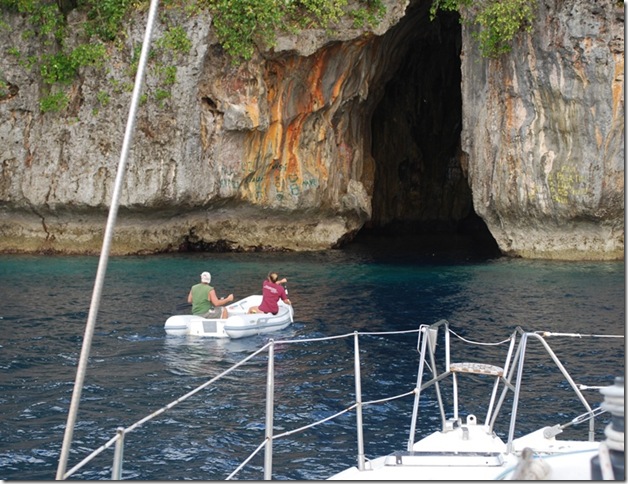 Wes & Tiff paddling toward Swallow’s Cave
Wes & Tiff paddling toward Swallow’s Cave
The only bad thing about Tonga is that there are so many cruisers here that we’ve met along the way or have gotten to know here that we are missing out on interacting with the locals. Even many of the waterfront businesses that cater to cruisers are run by expats.


